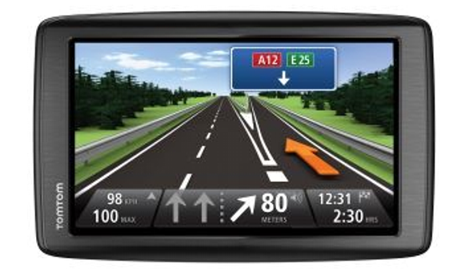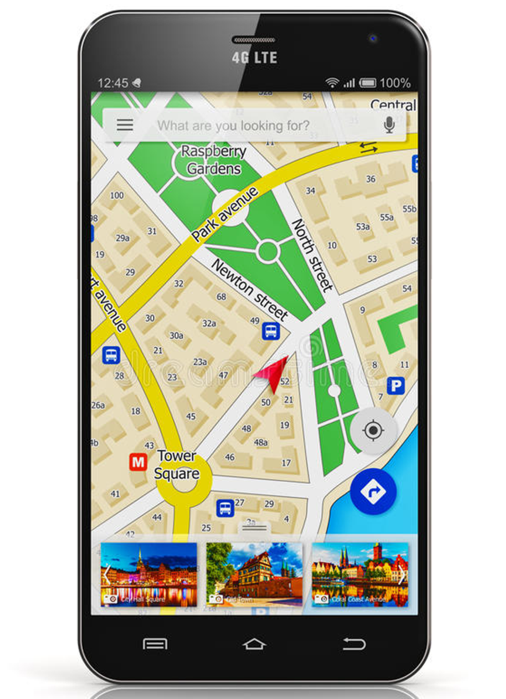portable navigation device (PND)
A navigation device, Personal or Portable Navigation Device (PND), is a small handy GPS receiver for tracking and navigation. These compact navigation devices work with GPS system and satellite navigation. They are available as functionally independent devices for positioning with superimposed GPS coordinates and for navigation, route planning and calculation.
Route calculation can be based on the shortest or fastest route, and route guidance is visual on the display and voice via a voice user interface(VUI). The voice output includes route instructions and color direction announcements as well as information on speed limits. Route entry is done on the display, a touchscreen onto which operator guidance is superimposed and activated with the fingers. The menunavigation extends to the display of the alphabet, which can be used to enter the city and street names.
For the display, navigation devices have a more or less large display with resolutions in Quarter VGA( QVGA) or higher, on which the map material is displayed in two or pseudo three dimensions. The Time To First Fix( TTFF), i.e. the time for the first GPS position determination, ranges from a few seconds to about one minute, depending on the operating state of the navigation device. The positioning accuracy depends on the GPS system and is about 5 m. Updating the map software can be done via downloads from the personal computer or even from the smartphone. In addition, they have a relatively large memory and some function and control buttons.
Depending on the concept and equipment, PNDs can be used in automotive technology and download congestion reports or detours from digital traffic radio( TMC) and incorporate them into route planning. Navigation devices can be equipped with additional functions such as augmented reality( AR) for city tours and display location-based services( LBS).
In addition to pure navigation devices, there are handy PDAs and smartphones in which the corresponding navigation and route functions are integrated. The further development of classic navigation devices takes into account location-based information from landmarks and buildings. This information is retrieved from a library and displayed as markers on the road maps. The culture and history of these points of interest are addressed in language and text.


